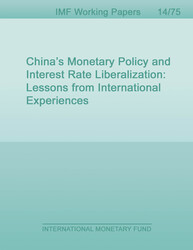
China’s Monetary Policy and Interest Rate Liberalization
Lessons from International Experiences
China has been moving to a more market oriented financial system, which has implications for the monetary policy environment. The paper investigates the stability of the money demand function (MDF) in light of progress in financial sector reforms that, for example, have resulted in significant financial innovation (so-called shadow banking) and more liberalized interest rates. The analysis of international experience suggests that rapid development of the financial system often leads to structural shifts in the MDF. For example, financial innovation and liberalization alter the sensitivity of money balances to income and the interest rate. For China, we find that the stable long-run relationship between money demand, output, and interest rates that existed between 2002 and 2008 disappears after 2008. This coincides with the period of rapid financial innovation, especially the growth in off-balance sheet and nonbank financial intermediation. The results suggest that usefulness of M2 as an intermediate monetary target has declined with financial innovation and reform. A result that underscores the importance of moving toward increased reliance on more price-based targets such as interest rates.
Publication date: May 2014
ISBN: 9781484366295
$18.00
Add to Cart by clicking price of the language and format you'd like to purchase
Available Languages and Formats
| English |
Prices in red indicate formats that are not yet available but are forthcoming.
Topics covered in this book
This title contains information about the following subjects.
Click on a subject if you would like to see other titles with the same subjects.
Economics- Macroeconomics , Economics / General , International - Economics , Financial Liberalization , Financial Innovation , Money Demand Function , financial reforms , financial market , money demand , Financial Markets and the Macroeconomy , Monetary Policy (Targets , Instruments , and Effects) , and Money Demand Function
Summary
Copyright © 2010 - 2024
Powered by:
AIDC



